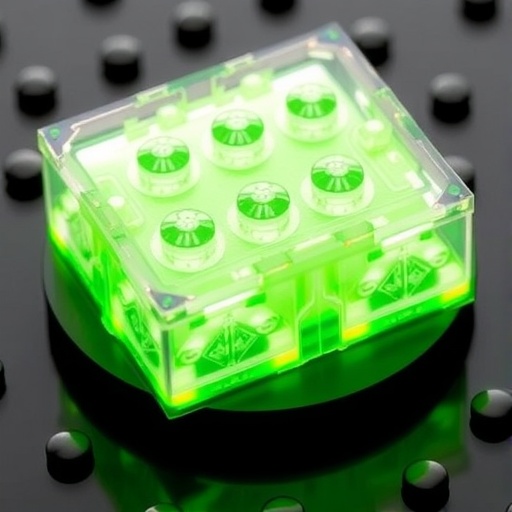Recent advancements in the field of electrochemical energy storage have led researchers to explore new materials to enhance the performance of cathodes in sodium-ion batteries. A notable study led by Lin, G., Cheng, Y., and Lei, J. investigates the impact of co-doping with aluminum (Al) and yttrium (Y) on the electrochemical properties of Na3V2(PO4)3, a potentially high-performing cathode material. This cutting-edge research is crucial, as the demand for efficient and sustainable battery technologies is increasing in tandem with the rise of renewable energy applications and electric vehicles.
The sodium-ion battery technology is gaining traction as a viable alternative to the conventional lithium-ion batteries. Sodium is an abundant and cost-effective resource, making sodium-ion batteries an attractive option for large-scale energy storage. The quest for optimal cathode materials is pivotal to advancing the efficiency, lifespan, and overall performance of these batteries. Na3V2(PO4)3 is one such candidate that has shown promise due to its high energy density and structural stability. However, enhancing its electrochemical performance has been a significant challenge, prompting researchers to explore innovative approaches such as co-doping.
Co-doping, the process of introducing two different dopants into a host material, has been recognized for its capacity to create synergy between the dopants, ultimately leading to improved material properties. In this study, the researchers implemented a combination of Al and Y dopants in Na3V2(PO4)3. This strategic approach was designed to optimize the electronic structure and enhance ionic conductivity, which plays a critical role in electrochemical performance.
The researchers employed advanced experimental techniques to fabricate and characterize the co-doped Na3V2(PO4)3 samples. X-ray diffraction, scanning electron microscopy, and electrochemical impedance spectroscopy were some of the methodologies utilized to assess the structural and electrochemical properties of the synthesized materials. Through these techniques, the team could effectively analyze how Al and Y modify the crystal structure and facilitate better ion transport during charge and discharge cycles.
It was observed that the co-doping significantly improved the electrochemical performance of the Na3V2(PO4)3 cathodes. The enhancement was attributed to the synergistic effects of the two dopants, which optimized the energy levels and facilitated ionic movement within the material. The results indicated an impressive increase in the specific capacity, indicating that the co-doped cathodes could deliver more energy per unit mass compared to their undoped counterparts.
Moreover, the study highlighted the significance of the structural integrity of the cathode material during repeated charge and discharge cycles. Maintaining structural stability is crucial for achieving long cycle life in batteries. The co-doping approach offered not just enhanced capacity but also improved cycle stability, suggesting that this method could potentially prolong the lifespan of sodium-ion batteries.
Another noteworthy finding from the study pointed to the rate capability of the co-doped samples. The ability of a battery to discharge and recharge quickly without significant loss in capacity is a crucial performance indicator. The researchers gauged how the Al/Y co-doping affected the kinetic performance during rapid charge and discharge operations. The results confirmed that the co-doping strategy provided favorable conduction pathways for sodium ions, leading to superior rate capabilities.
As the research delves deeper, it focuses on the potential applications of the enhanced Na3V2(PO4)3 cathodes in real-world energy storage systems. The implications of this study extend to electric vehicles, renewable energy systems, and grid storage solutions. With the continuous push towards sustainability, finding high-performance, low-cost battery alternatives is imperative, and these innovations could pave the way for more resilient energy infrastructure.
This significant headway in enhancing the electrochemical performance of Na3V2(PO4)3 through co-doping invites further exploration into other potential dopants and structural modifications. As researchers continue to unravel the complexities of battery materials, the focus will likely shift towards tailoring performance characteristics to meet specific energy storage needs. The synergy between various dopants might bring forth new possibilities in optimizing cathode materials for even greater efficiency.
The potential impact of this study transcends the academic realm; it beckons future collaborations between researchers and industry stakeholders to drive the commercialization of sodium-ion technologies. Batteries are the backbone of modern energy systems, and understanding how to manipulate material properties can lead to groundbreaking solutions that meet the global energy demands of the future. Bridging fundamental research with practical applications remains a pivotal challenge, and insights from this study may inspire not just academics, but also engineers and technologists striving to make sustainable energy accessible.
The findings presented in this research underscore the vitality of interdisciplinary approaches in materials science, particularly in battery technologies. As the world gravitates towards renewable energy sources, the insights gained from improving sodium-ion battery performance could serve as a catalyst for wider adoption of sustainable energy solutions across various sectors. The study itself is a testament to the delicate balance between theoretical innovation and practical application, emphasizing that thoughtful experimentation can yield solutions to pressing energy challenges.
In conclusion, the exploration of co-doping strategies in materials like Na3V2(PO4)3 represents a promising frontier in the quest for next-generation sodium-ion battery technologies. As we inch closer to overcoming the limitations of current battery systems, the ongoing research into optimized cathode materials embodies the hope for a more efficient, sustainable future in energy storage solutions. This study adds another piece to the puzzle, edging us closer to realizing the full potential of sodium-ion batteries in our rapidly evolving technological landscape.
Subject of Research: Enhanced electrochemical performance of Na3V2(PO4)3 cathodes through Al/Y co-doping.
Article Title: Enhanced electrochemical performance of Na3V2(PO4)3 cathodes enabled by the synergistic effect of Al/Y co-doping.
Article References: Lin, G., Cheng, Y. & Lei, J. Enhanced electrochemical performance of Na3V2(PO4)3 cathodes enabled by the synergistic effect of Al/Y co-doping.
Ionics (2025). https://doi.org/10.1007/s11581-025-06724-0
Image Credits: AI Generated
DOI: https://doi.org/10.1007/s11581-025-06724-0
Keywords: Sodium-ion batteries, Na3V2(PO4)3, co-doping, electrochemical performance, energy storage.




